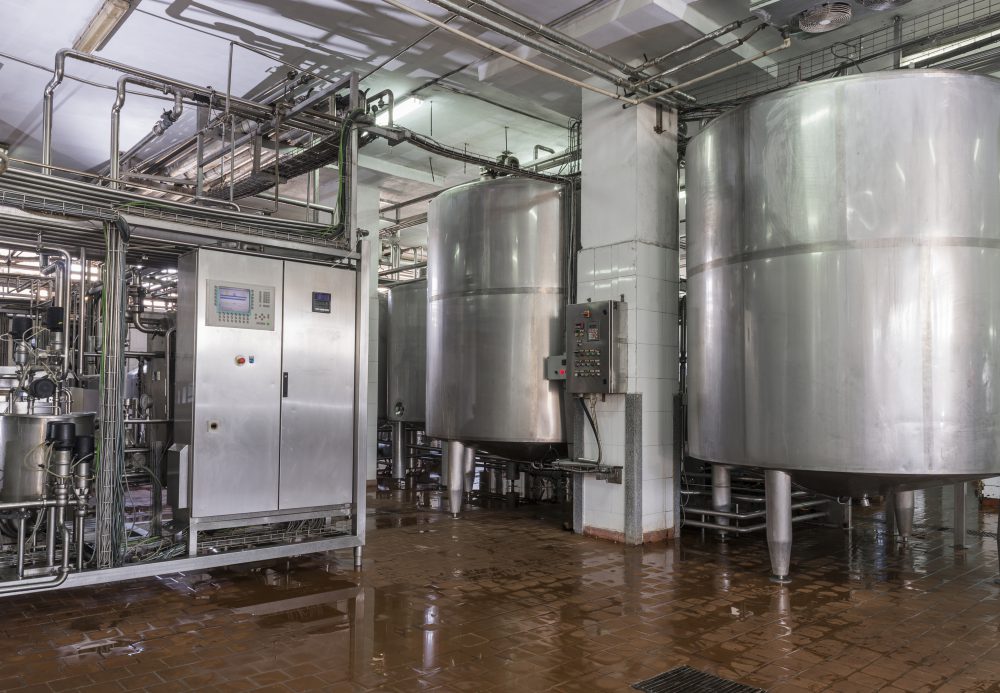A number of food manufacturing facilities have been utilizing clean-in-place (CIP) for years. It’s the method of cleaning processing equipment and piping without disassembling it. While most of us already know what CIP is, when was the last time you performed a thorough audit of your system?
Over the years, changes to the systems being cleaned may have caused the CIP system set-point ratios to change without notice to the operators — making it more out of whack than you may realize.
Finding the sweet spot for the clean-in-place ratio
All ClP systems ultimately come down to four variables:
- Time
- Flow
- Temperature
- Concentration of cleaning solution
In this way, clean-in-place is a lot like doing your laundry at home: You select a wash cycle (which determines the water level), the desired water temperature, the amount of time the washing machine will run, and then add the appropriate amount of detergent.
But if one of these parameters change — if you forget to add detergent or don’t have enough water — your clothes won’t be cleaned properly. The same principle applies to a CIP system.
Changes may have been made to your CIP parameters over time without you realizing it. The temperature may have been raised to speed up cleaning time in order to increase throughput to meet demand. Oftentimes, decreasing cleaning time requires increasing the concentration of cleaning solution to compensate.
Why does this matter? Because these changes may seem small, but over time they can lead to greater inefficiencies, for example:
- Increasing water temperature requires greater energy use
- Overusing cleaning solution can mean overspending on these chemicals
- Unnecessarily increasing flow rates can waste water
- Increase in time cleaning means a decrease in time for production
So is your CIP system as efficient as it’s supposed to be? Does your cleaning process look the same as when it first started?
A system an audit can restore balance (and mitigate risks)
If you have doubts about the efficiency of your CIP system, it’s worth considering an audit to determine if those four main variables (time, flow, temperature and concentration of chemicals) are where they should be.
You can either conduct this analysis internally or bring in a third party firm to ensure your system is operating as efficiently as possible. These experts know best because they’re often the ones who design and install these systems.
When your CIP system is tweaked and corners are cut, the benefits are not worth the risks. Ultimately, these changes can influence your product quality and you open the door to potential contamination and product recalls. This is especially true for ready-to-eat products and beverages, because they go straight from the packaging into the consumer’s body.
Integrating cleaning into your processing
We often work with dairy manufacturers, and the leading brands all pay the highest degree of attention to the sanitary design of their plants. It ranks up there with production volume and efficiency. Why? With dairy, cultures and other organisms can easily contaminate other products if facilities don’t establish proper cleaning procedures. Without proper cleanup, the same products can’t be made from day to day. The same principle applies to any facility, though, regardless of what it produces.
To mitigate these risks, it’s critical to truly build cleaning into your process and make it a priority. Most of the time contamination happens because a facility failed somewhere along the line in their cleaning process.
Think of it this way: If you leave dirty dishes in the sink at home, you can’t start cooking your next meal until you clean those dishes so they’re usable again. Food manufacturing facilities aren’t much different. They aim to produce high-quality products while minimizing the cleanup involved, but they must first begin processing with clean equipment — which is often easier said than done when considering the demands of today’s fast-paced marketplace.
The bottom line is this: If you don’t keep up with proper CIP protocol, you’re going to see product quality loss in the long term. That slip can affect your customer relationship, you brand integrity and your bottom line. Consider an audit to ensure your system is in-check and optimized for your plant’s needs.
Have questions about clean-in-place or food plant sanitation? Comment below or email me at foodforthought@stellar.net
Note: A version of this post first appeared in the May/June issue of Food Manufacturing magazine.



